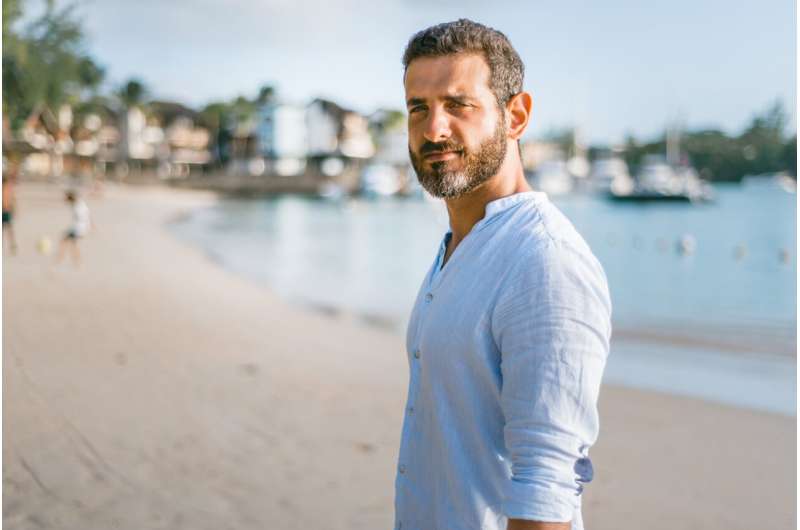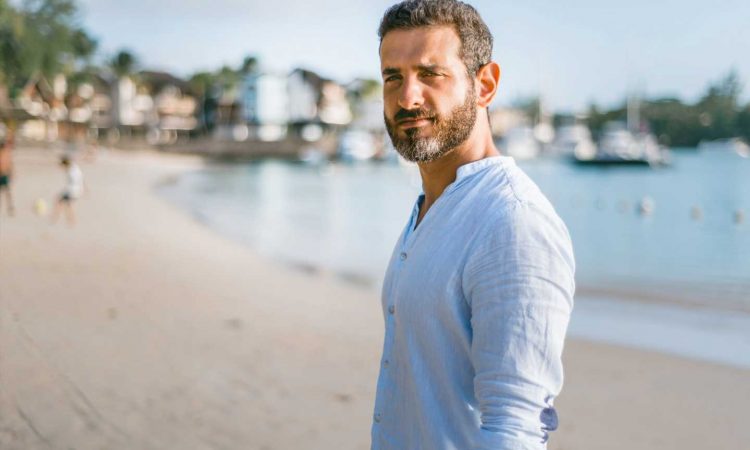
A diagnosis of prostate cancer can bring up many worries. There may be a general fear around having cancer, questions about the best treatment, and anxiety about how a treatment could affect such vital things as sexual function and continence. While those concerns are real, it may help to know that prostate cancer treatment—and prostate surgery, in particular—looks much different today than it did even a decade ago.
Patients have more choices now. And surgeons with specialized training and expertise in prostate cancer surgery have a wider range of techniques and technology to work with than ever before. They can tailor a type of surgery specifically to the patient, while also increasing the odds of an easy recovery with minimal side effects and complications.
First, it’s important to know that prostate cancer is common—it is, in fact, the second leading cause of cancer death for men in the United States. But for many, the cancer grows so slowly that doctors may recommend a program of monitoring the cancer rather than rushing to treat it. This is especially true for older men who are likely to die from something other than their prostate disease, especially if they have other conditions.
This is the case for about 20 to 30% of patients who come to Yale Medicine for prostate cancer care, says Isaac Kim, MD, Ph.D., MBA, professor and chair of the Department of Urology at Yale School of Medicine, noting that these patients can be monitored, with no urgent need for immediate treatment. “The rest should probably have surgery or radiation,” he says.
And for many patients who need treatment, the idea of surgery brings worry. “Patients come to my office concerned about the potential side effects of surgery—they are afraid they will become incontinent or have erectile dysfunction,” says Dr. Kim, who has performed more than 2,100 robotic prostate cancer surgeries. “But outcomes from prostate surgery can be much better than you think if you intervene early, especially with the current robotic technology.”
We spoke more with Dr. Kim and Yale Medicine urologist Preston Sprenkle, MD. Below, they share their knowledge about the latest innovations in prostate cancer surgery.
Ask your prostate surgeon the right questions
The choice of prostate cancer treatment depends on such factors as age and general health, as well as a patient’s risk categorization determined by their Gleason score. The Gleason score, a way of estimating how likely the cancer is to spread, is determined based on a biopsy sample. Gleason risk groups range from low/very low to intermediate (broken out to favorable or unfavorable) to high/very high.
First, you need as much information as possible about your prostate cancer. Yale Medicine has an Active Surveillance Program that uses advanced imaging and real-time ultrasound to monitor and biopsy suspicious lesions. Many patients in the program who have a low-grade form of prostate cancer never need surgery, Dr. Sprenkle says.
For men who do need surgery, there are at least three questions they should be sure to ask the surgeon, he adds. The first is which surgical approach is going to provide the best control of the cancer? The second is which approach will have the fewest side effects? The third is which approach tends to have the swiftest recovery, the quickest hospital stay, and fastest return to function?
It’s important to keep in mind that different surgeons may have different opinions on the best surgery in a given situation, and they won’t all have the same levels of experience with some operations. For that reason, Dr. Sprenkle encourages patients to ask questions about the surgeon’s comfort level with a recommended surgery and the number of times they have performed it.
He also suggests asking them about the outcomes with that surgery in their practice, including the rates of continence and erectile dysfunction after the surgery. “You’re looking to understand what, in the surgeon’s mind, are the factors that contribute to their success rates.”
Most prostate surgeries are now done robotically
In the U.S., about 95% of prostate surgeries are performed robotically, with the surgeon sitting apart from the patient at a control console, watching progress on a high-definition monitor while controlling the robot remotely. The robot translates the surgeon’s hand movements into precise micro-movements, making it easy for them to manipulate a tiny camera and surgical instruments with greater range of motion than they could with their hands.
Robotic procedures are done with the patient under general anesthesia and take two hours or more to complete. The possibility of side effects is a concern with any type of prostatectomy—even with the aid of a robot—the main ones being an inability to control urine after surgery, and difficulty having or maintaining an erection. There are several different types of robotic surgeries, and each one comes with its own set of benefits.
Single-port robotic surgery: One tiny incision
Dr. Kim estimates that about 50% of men who have a robotic prostatectomy at Yale are eligible for a single-port robotic surgery, which essentially turns the removal of the prostate into an outpatient procedure. In addition to allowing patients to go home the same day, the surgery is associated with less pain, fewer wound complications, and minimal scarring. Yale New Haven Hospital has the only single-port robot in Connecticut.
The surgeon performs the single-port surgery using the da Vinci Robotic System, which is the only surgical robot approved by the Food and Drug Administration (FDA) to perform various types of procedures. The newest generation da Vinci robot has a single robotic arm. By comparison, the previous generation da Vinci robot, which is still used for many other types of prostatectomies, has four arms—and requires five buttonhole-sized incisions compared to the single 4- to 5-inch incision used for an open surgery.
The key difference with the single-robot arm is that it can work in a smaller cavity in the abdomen (called the extraperitoneal space), rather than in a larger cavity (called the peritoneal space), which contains the bowel and other organs. “When you have four arms involved you need a much bigger space, because the footprint of the robot is large,” Dr. Kim says. “Whenever you are occupying the space in which the bowel sits, there is a higher rate of potential complications.”
Working in the extraperitoneal space, “the impact to the body is significantly less—and so is the pain—and patients go home the same day.” Another benefit is that there is no need to set the patient up in what is known as “steep trendelenburg positioning,” with their legs in the air and head down at a 30- to 45-degree angle, which can be a major source of stress for patients under anesthesia, and is associated with congestion and respiratory problems during surgery. During the single-port surgery, “they can essentially stay flat on the table,” says Dr. Kim.
Retzius-sparing surgery has a good record of continence recovery
Dr. Sprenkle says he’s had success with an approach called retzius-sparing prostatectomy, which is associated with better earlier continence rates compared to other prostate-removing surgeries. The term “continence rate” refers to the ability to control your bladder and bowel to the extent that there is either no leakage or it is minor enough to allow you to live normally, wearing a pad.
“This can get to personal preference,” Dr. Sprenkle says. With the retzius-sparing surgery, multiple studies have shown that a much higher percentage of men have a faster recovery of continence than they would with the multiple-incision robotic surgery or with the single-port surgery. “A much higher percentage of men are ‘completely continent’ when the catheter comes out,” he says.
The surgery uses a robot, but approaches the prostate from below the bladder rather than from above it. The surgeon works through the peritoneum—the tissue that lines the abdominal wall and covers most of the organs in the abdomen—and spares the “space of retzius,” which leaves the bladder and surrounding structures—including the vessels and nerves associated with urinary continence—in a more “natural” anatomic location.
Prostate cancer surgery should be individualized to each patient
Not every prostate cancer can be treated with a single-port approach or retzius-sparing surgery, but there are other choices. “We have a large and expanding repertoire of treatment options that allow us to personalize treatment to each patient’s needs,” says Dr. Sprenkle.
The potential options include several different surgical approaches and robots, as well as the alternative of radiation therapy, which uses high-energy rays or particles to kill cancer cells, delivered in precisely targeted external beam treatments or an implanted radioactive seed. For small tumors, another approach is focal therapy, a term for noninvasive techniques for eliminating the tumors while leaving the prostate gland itself intact.
The best candidates for single-port surgery are men whose cancer is classified as “favorable intermediate risk,” Dr. Sprenkle says. He wouldn’t recommend it for men with unfavorable intermediate or high-risk cancer, because the approach doesn’t provide easy access for pelvic lymph node dissection to assess whether the cancer has spread.
Using the previous generation robot and making five small incisions might be better for those patients, he says. It’s also true that not every medical center has a single-arm robot and not every surgeon is trained to do a single-port prostatectomy, which is difficult to perform.
Some simply favor other approaches, Dr. Sprenkle says.
Ultimate outcomes are similar regardless of the surgical approach
In general, while each approach has its advantages, all have been shown to have similar outcomes, adds Dr. Sprenkle. “There are no significant differences in outcomes for patients between the open surgery and robotic ones. There is less blood loss on average with robotic surgery, and in the hands of a good surgeon, continence and sexual preservation is the same,” he says, adding that while it varies from patient to patient, average recovery time is six weeks. “And cancer control is the same. Put another way: It’s better to focus on finding the right surgeon rather than the approach or type of surgery.”
As far as what that means for patients deciding on which surgery they should get, Dr. Sprenkle says that it’s important to take time to think about all of your options.
Source: Read Full Article
